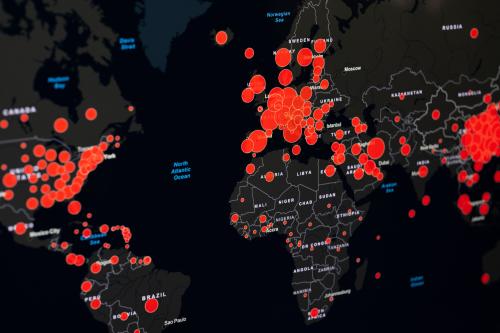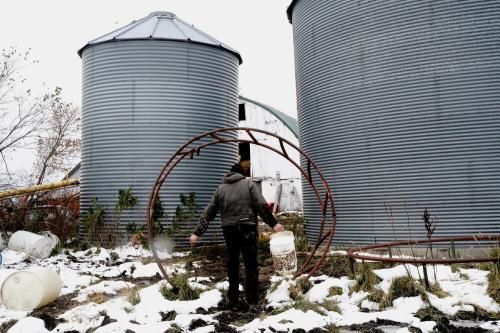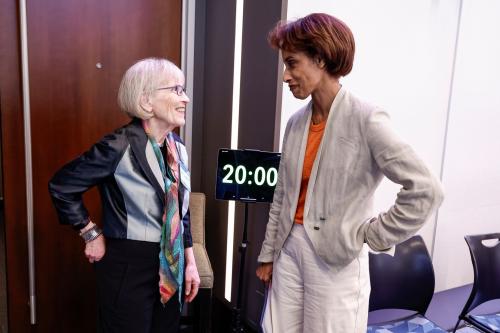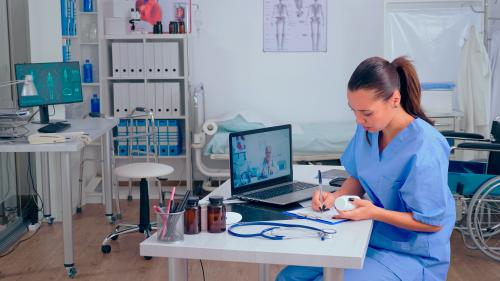The COVID-19 pandemic has already killed 500,000 Americans and infected more than 28 million. Although national cases have recently been declining, the next few months are a critical time period that is fraught with uncertainty about the possible introduction and spread of new highly contagious SARS-Cov-2 variants, the pace of the rollout of effective vaccines, and nationwide availability of resources for testing and other containment efforts.
New research from The Brookings Institution Center on Social Dynamics and Policy provides guidance on how policymakers might navigate this critical time and contain a potential fourth wave until vaccination ramps up to levels high enough to provide widespread protection. Working closely with the St. Louis Department of Health, we developed a highly realistic, fine-grained simulation framework that captures empirically specific geography and demography of this metropolitan area of 2.5 million people along with contact patterns driven by where citizens live, work, attend school, and mix socially. We also characterized local distributions of individual-level COVID-19 case properties based on the most current, high-quality empirical research and represented current control measures in place across the region. This new model builds on our previous national-scale simulation for COVID policy decision support.
The project’s goal was to assist the health department in assessing containment policies and practices to minimize cases of COVID-19 in the coming six months–taking into account local conditions, planned and potential vaccine rollout schedules, and multiple scenarios for spread of new virus variants. In addition to the insights for St. Louis itself, several results from the analysis are of broad interest.
- First, we found that control measures which are working well against current variants are unlikely to be sufficient to contain the pandemic if new, more infectious strains of SARS-CoV-2 become widespread—even with vaccination rollout proceeding at the planned pace and assuming continued adherence to social distancing. While the details of both epidemiological conditions and current policies vary across the nation, this finding is a potentially cautionary one for other large cities and for states.
- Second, and echoing our previous national-level work, we find multiple distinct robust policies centered around testing and contact tracing that we project could contain even the more infectious variants of SARS-CoV-2 without requiring renewed large-scale shutdowns of business or schools, underscoring the potential importance of sustained investment in capacity for testing and tracing.
- And third, the model suggests that the spread of more contagious variants of the virus could be strongly curtailed by relatively modest increases in proper and consistent mask usage among the population. Our simulations underscore the importance of the recent CDC guidance on masking.
The new work shows how the national-scale framework we developed previously can be adapted and tailored to provide guidance to state and local policymakers and can be extended to help manage new uncertainties that continue to arise in the COVID-19 pandemic. Our analysis and close collaborative engagement with the St. Louis Department of Health also demonstrates the continued utility of the agent-based computational modeling approach as a decision support tool to assist policymakers at many levels of government in developing highly customized policies in the face of the substantial uncertainty that remains part of managing the COVID-19 pandemic.
Click here to learn more about TRACE-STL >>
The TRACE-STL team includes Ross A. Hammond, Matt Kasman, and Rob Purcell. Learn more about the Center on Social Dynamics and Policy here.
The Brookings Institution is committed to quality, independence, and impact.
We are supported by a diverse array of funders. In line with our values and policies, each Brookings publication represents the sole views of its author(s).






Commentary
TRACE-STL: Stemming a fourth COVID-19 wave at the local level
March 1, 2021